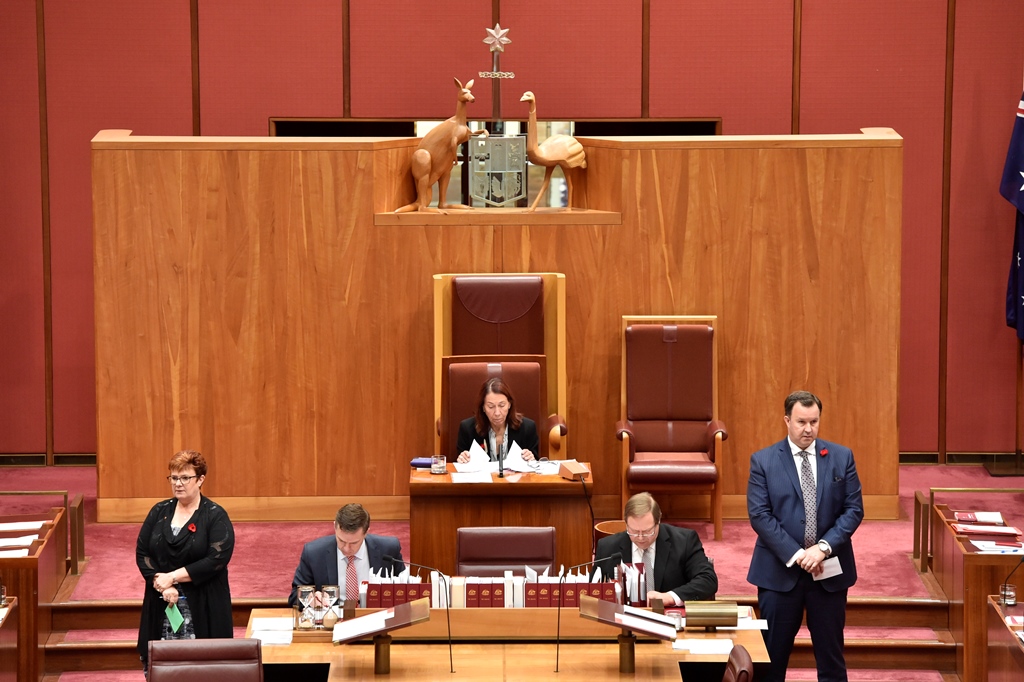Party whip
This factsheet explains the role of the party whip in Parliament including how they help keep political teams organised and working together.
What will I learn?
- A party whip helps keep their party organised in Parliament.
- Whips make sure their party works as a team.
- Whips have many responsibilities during sitting weeks in Parliament.
Party whips counting the votes in a division in the Senate

DPS Auspic
Description
Two party whips standing on either side of the Clerk's table in the Senate during a division – a formal vote. The whips are responsible for counting and recording the votes. The whips also have other responsibilities as they help manage their party during sitting weeks in the Australian Parliament.
Copyright information
Permission should be sought from DPS AUSPIC for third-party or commercial uses of this image. To contact DPS AUSPIC email: auspic@aph.gov.au or phone: 02 6277 3342.
What is a party whip?
Party whips counting the votes in a division in the Senate

DPS Auspic
Description
Two party whips standing on either side of the Clerk's table in the Senate during a division – a formal vote. The whips are responsible for counting and recording the votes. The whips also have other responsibilities as they help manage their party during sitting weeks in the Australian Parliament.
Copyright information
Permission should be sought from DPS AUSPIC for third-party or commercial uses of this image. To contact DPS AUSPIC email: auspic@aph.gov.au or phone: 02 6277 3342.
A party whip is a member of Parliament chosen by their political party to help keep their party organised during sitting weeks in the Australian Parliament. Whips make sure party members know what is happening in Parliament, when to speak, and how to vote in line with their party. They help the party work as a team.
Whips are appointed in both the Senate and the House of Representatives. The role is so varied and busy that major parties usually have a chief whip and 2 deputy whips. However, not every party has a whip in both houses of parliament. Smaller parties may only have a whip where they have members or choose not to have a whip.
Responsibilities
Whips have many responsibilities to help coordinate their party in Parliament. They work closely with other whips, party leaders, the Clerks, and the President of the Senate or Speaker of the House of Representatives. Their job is to help manage the day-to-day business in the Senate or House, along with their usual duties as a senator or member of the House of Representatives.
Their responsibilities include:
- meeting with the whips of other parties to plan out what will be talked about during a sitting day
- sharing information between party leaders and members and helping to raise concerns or questions from the party
- organising a list of party members who wish to speak during debates or other business and giving this to the President or Speaker
- organising party members to make sure they attend and vote together during divisions
- counting and recording the votes in a division
- negotiating the ‘pairs’ from opposing parties, so numbers between the government and opposition stay balanced if members are away.
History
The term “whip” comes from fox hunting in England. A “whipper-in” was the person who kept the hunting dogs in a pack, pointed them in the right direction to chase the fox and made sure the pack did not stray. The role was adopted into politics to describe someone who keeps party members united and in line. The parliamentary term dates back as far as the 17th century.